#Mould Capital of China
Text
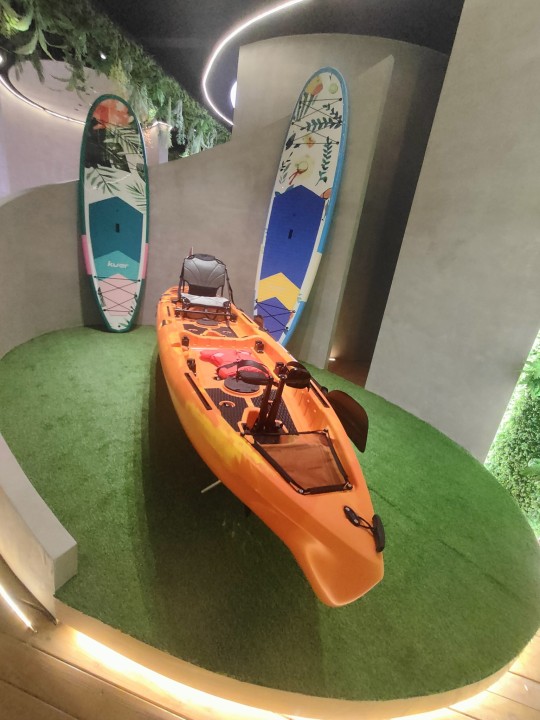

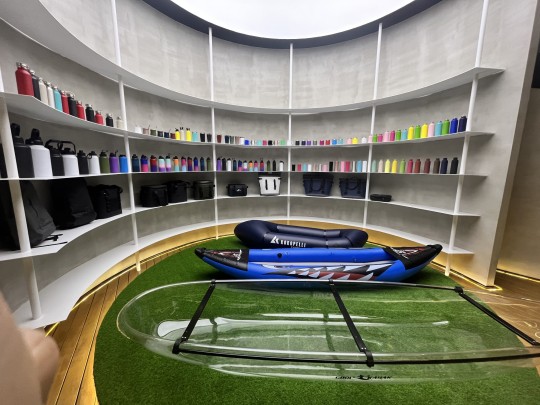
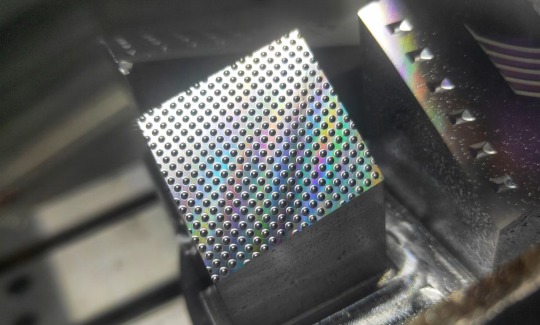
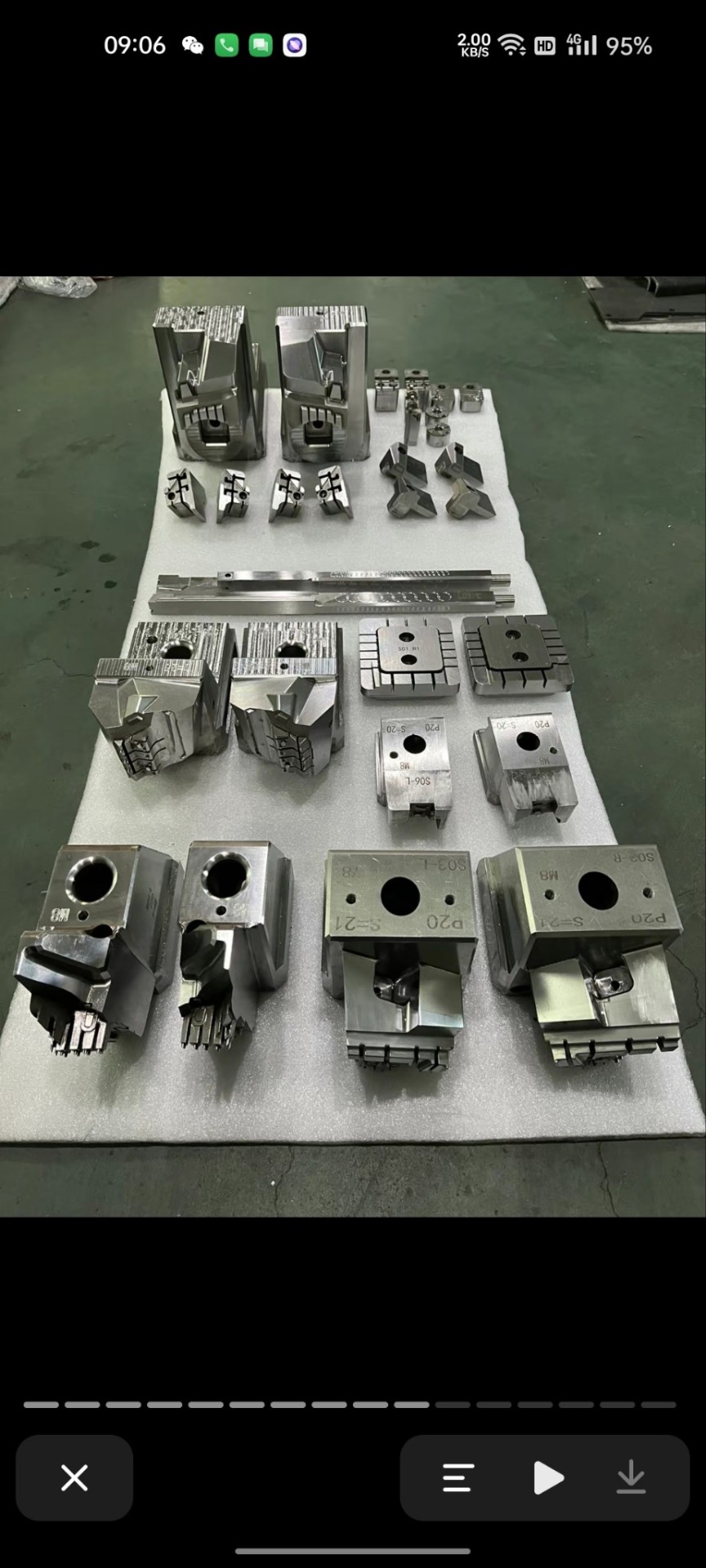
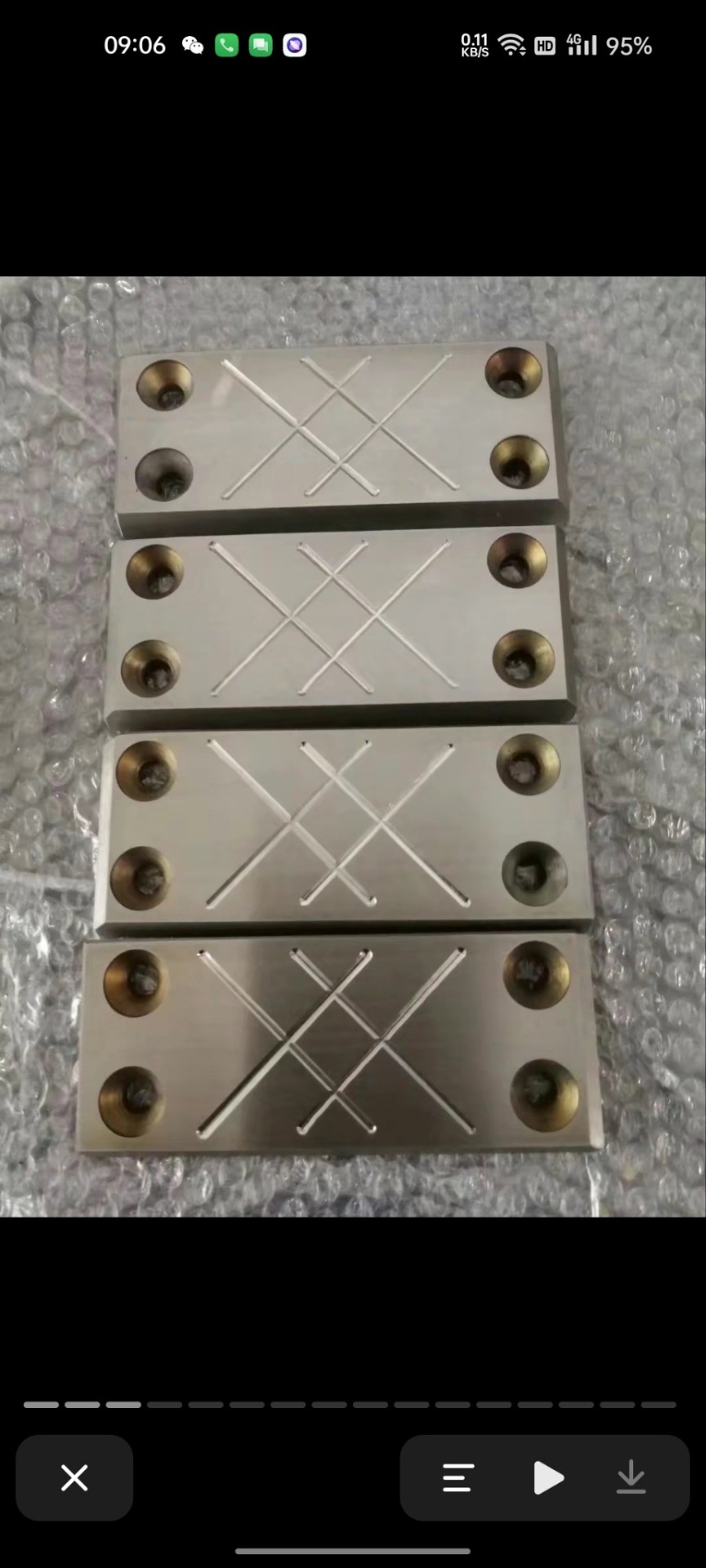
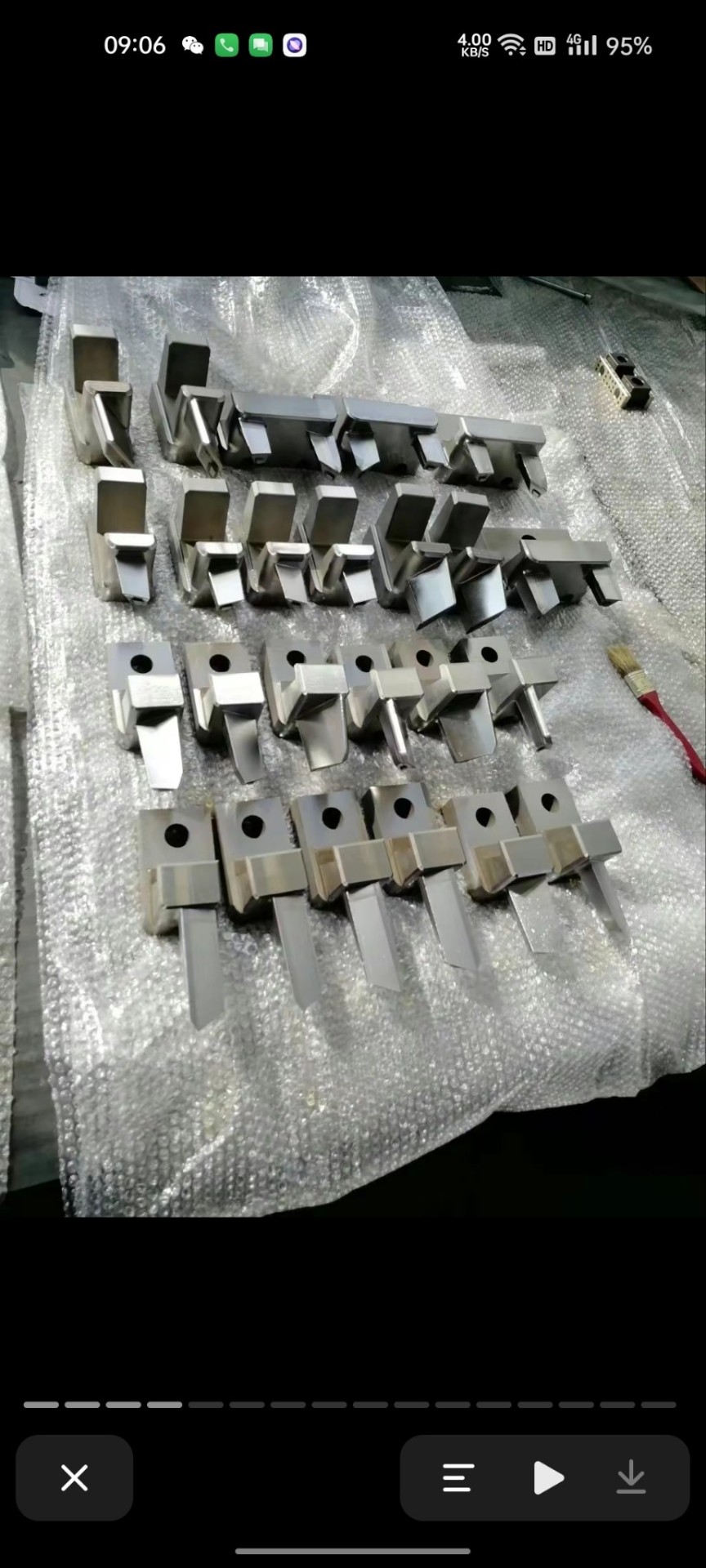

0 notes
Text

QARAQORUM STREET VIEW, 1250s
Qaraqorum (Karakorum, Khara Khorum) is famous as the capital of the Mongol Empire and housing the court of the Great Khans, but the textual sources and archaeological study also demonstrate its important as a regional production centre.
The dense settlement layer, particular along the central street and main intersection within the city, shows extensive evidence for wide ranging crafts production, such as glass working, gem and precious stone working, bone carving, processing of birch bark, with furnaces for metal working and kilns for ceramics located in the immediate vicinity of the city. Gold bracelets and the moulds for them and other items have been found in the workshops; remains of iron fragments (bars, wheels caps, even a plough) testify to other activities produced in the city, and for local agriculture. In the written record, we see Khans from Ögedei to Töghön-Temür sending craftsmen and labourers from China to Qaraqorum to expand agriculture, construct palaces and temples, repair existing structures or otherwise support the local economy. This is reflected archaeologically, as the city shows possibly six phases of building and rebuilding from the 13th century until late in the 14th.
In this image you can see a smith's shop, with various Chinese, nomads and even an Alan taking part in activities here. In the background you can see the city's large Buddhist temple complex, the “Pavilion of the Rising Yuan." Begun under Ögedei (but not completed until Möngke's reign, and extensively rebuilt under Töghön-Temür), this huge structure was as high as 90 metres, according to an inscription found on site! Though estimates based on its foundation suggest a slightly more modest structure up to 38 metres high.
You can learn more about Qaraqorum's role in Mongolia's production networks in my latest video on nomadic blacksmithing:
youtube
19 notes
·
View notes
Text

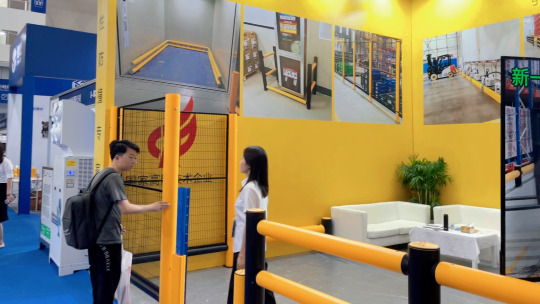


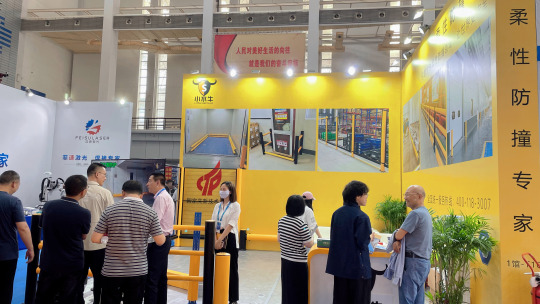



The 19th Capital Of China Mould Expo(NingboMachineTool & Mould Expo ) looks forward to your arrival, andwe will be very happy to serve you
0 notes
Text
Everything about portail
A double-peak Place, the ballroom is lined with tall, arched Home windows positioned between rectangular pilasters that happen to be topped with gilt, acanthused capitals. Cable moulding trim surrounds almost all of the openings and, round the perimeter in the room, with the intersection of partitions and ceiling, is a deep and ornate plaster crown moulding fashioned by a godroon textured frieze as well as a heavy dentiled bed-mould amongst layers of talon and gorge mouldings. Previously mentioned Here is the Victorian, lacunar, distinct span vaulted ceiling, from your centre of which hangs a one particular-ton chandelier, made up of twelve,000 items of Waterford Crystal,[ninety one] that was introduced because of the British governing administration on Victoria Working day in 1951 like a token of gratitude for Canada's position in Earth War II.
The ponds at Beckmen Vineyards had been specifically created to appeal to birds, turtles, frogs and various wildlife.
website , se dit aussi de l'ais ou planche qui sert à fermer cette ouverture. Il faut tous les jours abaisser le volet, fermer le volet, de peur que la fouine n'aille manger les pigeons. Quelques-uns derivent le mot de volet de valvula, comme qui diroit valvulet.
Si vous cherchez un volet roulant qui peut vous offrir un confort de vie, ce volet roulant haut de gamme est le choix à faire à tout prix.
I was capable of head over to Office stores and take a look at on dresses. You could not do [that] as a Black individual while in the South.
Dépannage Rideau Métallique : L'great importance d'un entretien et d'une réparation professionnels Lire aussi
La part suivante abordera les défis courants que vous pourriez rencontrer et comment les surmonter avec succès.
Once the arrival of railway routes into Ottawa, most use on the canal was for pleasure craft. The introduction from the outboard motor brought about a rise in small pleasure craft and increasing utilization of inland waterways like the Rideau and Trent-Severn.
WS: Whenever you were in L. a. working on your securities and insurance policies business, would you head out to restaurants and revel in wine?
The long gallery attributes Chinoiserie decorations gathered via the Marchioness of Willingdon Today the rooms are furnished both of those with aspects within the historical past on the home and also artwork along with other objects that showcase present-day Canadian lifestyle. The very long gallery's Chinoiserie decoration was restored in 1993 for the direction of Gerda Hnatyshyn, wife of Governor General Ray Hnatyshyn, Placing back again A lot with the furniture and artifacts that had been gathered via the Machioness of Willingdon all over her tour of China in 1926. The Room, accustomed to greet and host functions for ambassadors and large commissioners to Canada, now contains 5 carpets donated because of the Hongkong and Shanghai Lender and also a Steinway & Sons little one grand piano that belonged to Glenn Gould.
Excellent go-to reference for sorts of investigation gaps; can offer superior advice on what And exactly how to consider analysis and implementation.
With above 50 several years of expertise and know-how, we're obsessed with providing unbeatable holidays around the water.
Gazing through the outdoor tasting terrace and rows of thriving vines, it’s challenging to assume the dead walnut orchard that lined the land before house owners Tony and Tanya Vincent introduced the Vineyard to existence while in the mid-aughts.
Aviation Partie d'une aile ou d'une gouverne pouvant être orientée pour modifier les circumstances de vol.
0 notes
Text
Die Casting China - What you Need to Know
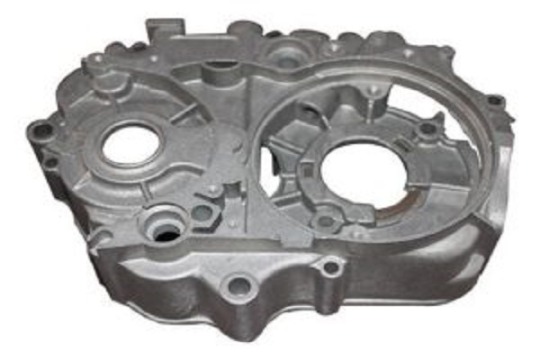
Metal casting characterized by forcing molten metal into mold cavities under high pressure is called die casting. A hardened tool steel die is used to create the mold cavity, which is machined into shape and works similarly to an injection mold. Zinc, copper, aluminum, magnesium, lead, pewter, and tin-based alloys are commonly used in die castings. A hot-chamber or cold-chamber machine is used depending on the type of metal being cast.
This process is limited to high-volume production due to the high capital costs associated with casting equipment and metal dies. Die casting is a relatively simple process that involves only four main steps, which keeps the incremental cost of each part low. Die casting produces more castings than any other casting process because it is well suited to a large quantity of small- to medium-sized castings. The surface finish of a die casting is very good (by casting standards) as are its dimensions.
Cast metal
A die casting alloy can be made from zinc, aluminum, magnesium, copper, lead, or tin, but ferrous die casting is rare. Specific die casting alloys include: zinc aluminum; aluminum to, e.g. The Aluminum Association (AA) standards: AA 380, AA 384, AA 386, AA 390; and magnesium AZ91D. Each alloy has its own advantages.
The easiest metal to cast; high ductility; high impact strength; easy plating; economical for small parts; promotes long die life.
Aluminum: lightweight; high dimensional stability for very complex shapes and thin walls; high corrosion resistance; high mechanical properties; excellent thermal and electrical conductivity; retains strength at moderately high temperatures.
A light alloy commonly die-cast from magnesium, it is the easiest metal to machine, has an excellent strength-to-weight ratio, and is the lightest metal to machine.
Copper has high hardness and corrosion resistance; excellent wear resistance; excellent dimensional stability; strength approaching that of steel.
An investment-cast steel alternative made of copper, zinc, and silicon, silicon tombac is a high-strength alloy composed of copper, zinc, and silicon.
The combination of lead and tin is extremely dense, highly dimensionally accurate, and corrosion resistant, which is why such alloys are not used in foodservice applications. Hand-set type is cast in type metal, an alloy of lead, tin and antimony, which is used in letterpress printing and hot foil blocking. In the days before industrialization, type was primarily cast in hand jerk moulds, but now they are mainly die cast. It was around 1900 that the slug casting machines were introduced, adding further automation to newspaper offices with dozens of machines.
The equipment
A die casting machine may be either hot chamber or cold chamber. They are rated by how much clamping force they can apply. Typical ratings range between 400 and 4,000 st (2,500 and 25,400 kg).
Die casting in a hot chamber
The molten metal feeds the die in hot-chamber die casting machines, also known as gooseneck machines. The machine's piston is retracted at the beginning of its cycle, allowing molten metal to fill the gooseneck. In the die, the metal is forced out of the gooseneck by a pneumatic- or hydraulic-powered piston. This system is particularly convenient due to its fast cycle times (15 cycles a minute) and melting of the metal in the casting machine. The disadvantages of this system are that it is limited to use with low-melting point metals and aluminum cannot be used because it picks up some iron while in the molten pool. Since hot chamber machines are primarily used with zinc, tin, and lead alloys, they are best suited for those alloys.
Die casting in cold chambers
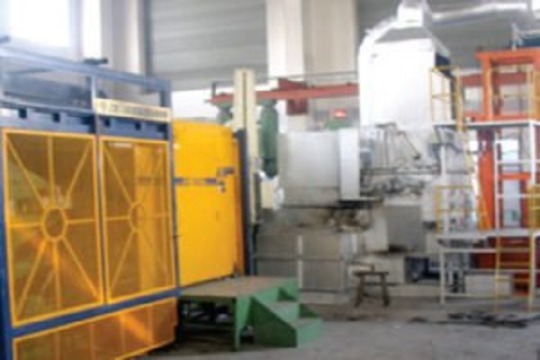
These are used when the casting alloy cannot be used in hot-chamber machines; these include aluminum, zinc alloys with a high proportion of aluminum, magnesium and copper. The process for these machines start with melting the metal in a separate furnace. Once in the cold-chamber machine, the metal is melted and fed into a cylinder that is not heated before being injected into the die by a hydraulic or mechanical piston. Due to the need to transfer molten metal from the furnace to the cold-chamber machine, this system has a slower cycle time. Get more info about CNC Machining.
The most important material properties for the dies are thermal shock resistance and softening at elevated temperature; other important properties include hardenability, machinability, heat checking resistance, weld ability, availability (especially for larger dies), and cost. Die longevity is directly linked to molten metal temperature and cycle time. Cast iron cannot withstand the high pressure involved in die casting, so dies are usually made from hardened tool steels. Since the dies are very expensive, the start-up costs are high. Dies made from higher alloy steels are required for casting metals at higher temperatures.
0 notes
Text
Expand Your Business In North East India With Assamese Translation Services

In terms of physical size, India is the 7th largest nation in the globe. In terms of population, the nation recently surpassed China and became the first.
India is a culturally as well as linguistically diverse nation. The most beautiful parts of the nation are in its North Eastern regions which mainly consist of cold climates and impressive mountainous regions.
The most prominently used language in the North Eastern regions of India is Assamese. Hence, if you are the owner of a brand that wants to expand its interests in the North Eastern parts of India then it is high time to invest in quality-assured Assamese translation services.
Linguistic localization is the key to success in the Indian market
You might be asking why you should invest in linguistic localization services such as professional Assamese translation services.
The answer is simple. Unlike other nations, India and its consumer market segments drastically vary across the nation’s regions. It means that brands would have to make sure that they are beaming out promotional content that gels with the targeted audience segment. And the best way to achieve this goal is to ensure that the promotional content designed to promote a brand and its offerings are linguistically and culturally localized using the expertise of a reputed Assamese translation company.
How does localization affect the outcome(s) of promotional campaigns?
As per the collective professional opinions of linguists associated with the top providers of English-to-Assamese translation services, it is best to remember that to succeed a brand would have to make sure that its promotional campaigns are doing all they can to influence the overall buying preferences of its customer base.
Furthermore, with the help of quality-assured Assamese language services, brands can also alter the expectations as well as the buying behaviour of their prospective as well as current clients.
If the above sections were not convincing enough then one must also remember that brands can quickly alter the way their offerings are being portrayed to the targeted market segments. For instance, if a brand previously chose to promote its offerings as luxurious offerings in a bid to lure customers with deep pockets but now the brand is planning to increase its profits by making its offerings more accessible then the only solution is the repositioning of the brand and its offerings.
Linguists proficient in Hindi to Assamese translation services can create brand-new content from the ground up that would alter the image of the brand in question and make its offerings more accessible overnight.
In simple words, public opinion about a brand and its offerings can be quickly moulded as well as shifted using linguistic services.
The importance of Assamese language translation services
Assamese is one of the most prominently used languages in India, especially in the nation’s North Eastern regions. In terms of users, Assamese is the preferred language of more than 13 million people in India. The language is prominently used in the capital of the Indian state of Assam. Furthermore, the language is also used in nearby North Eastern Indian states such as Meghalaya and Arunachal Pradesh. On top of this, some sections of Bangladesh as well as Bhutan also prefer to use Assamese for both formal as well as casual communications.
So, it makes sense for a company to consult professional language service providers like Bhasha Bharati Arts if the ultimate goal is to enter into the untapped market segments of the regions mentioned in the sections above.
Bhasha Bharati Arts can easily make brands popular in the North East
Bhasha Bharati Arts has been associated with the language services sector for decades. Furthermore, the brand can offer its linguistic services in more than 100 languages and their region-specific dialects. Bhasha Bharati Arts, over the years, has helped countless multinational corporations, start-ups as well as indigenous companies expand their interests in all corners of India. So, if you are running a company that is finally tapping into the promising market segments of North East India then it is time to avail the Assamese translation service packages offered by Bhasha Bharati Arts today. For more details, please call the agency.
#assamese translation services#translation company#professional language service provider#hindi to assamese translation services#english to assamese translation services#translation service provider
0 notes
Text
What Are Ceramics?
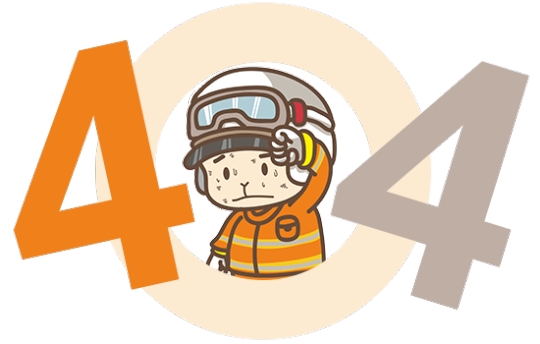
Ceramics are hard, brittle and durable materials that are used in a variety of applications. They are known for their high heat resistance, corrosion resistance, and good electrical insulating properties. They are used in many types of products including pots, dishware, cooktops, and cookware. The properties of ceramics are determined by their chemical composition and grain size.
Ceramics are inorganic, non-metallic, and highly resistant to plastic deformation. They are used in a number of industrial and medical applications. They are also known for their low ductility, making them ideal for insulating components. They are also used for self-lubricated bearings and artificial joints.
Traditionally, ceramics were made from natural substances like clay, quartz sand, and portland cement. In the Industrial Revolution, ceramics were developed and manufactured using advanced technologies. Today, they are widely used in the manufacturing of a variety of products including electronics, aerospace, medical equipment, and automotive.
Ceramics can be made into different forms and are usually made by moulding clay or water-based mixtures. The resulting product is fired in a kiln, which forms new chemical bonds. The final product may be a glazed or unglazed object. Some of the most common ceramics include porcelain, whitewares, and bricks.
سيراميك can be used in a number of different applications, such as body armor, spark plugs, and space shuttle tiles. In addition, they are used in fiber optics and as part of a nuclear fuel. They are also used in microchips and are used in medical devices such as orthopaedic implants.
The term ceramic comes from the Greek word for potter's clay. Early people started using ceramics nine thousand years ago. The first recorded use of ceramics occurred in southern central Europe. It was then used to make sculptures. The early smiths began to capitalize on the refractory nature of quartz sand. They formed moulds from this material to cast metals.
A key ingredient of most ceramics is feldspar. It can be added in various forms, such as sandstone or flint pebbles. Its composition varies from CaAl2Si2O8 to NaAlSi3O8. The addition of feldspar reduces the melting temperature of aluminosilicate phases. The feldspar also acts as a fluxing agent.
Another major ingredient of ceramics is silica. This is added as a filler to give the resulting ceramic its strength. However, silicas must meet a certain chemical purity.
Other common raw materials that are used to create ceramics are clay, kaolin, aluminum oxide, and silicon carbide. The raw materials for ceramics vary depending on the type of product to be manufactured. For example, a porcelain ware will be made from china clay, while a whiteware will be made from kaolin clay. A crystalline ceramic can be manufactured by slip casting, injection molding, or dry pressing.
The mechanical strength of a ceramic is determined by the Hall-Petch equation. The mechanical strength of a ceramic is largely influenced by the density of the crystalline grains. The strength of a crystalline solid is also dependent on the type of porosity in the material.
0 notes
Text
Are you planning to start a minor vending machine business but you don’t have enough money
Are you planning to start a minor vending machine business but you don’t have enough money? Of course, if you will start a vending machine business, you need to purchase a vending machine. But how are you going to get one if your budget isn’t much? Is it possible for you to start the business? If you only have limited capital but you want to start a business, you can purchase a used vending machine. When you are going to purchase a used vending machine make sure to follow these easy steps. Make sure that the price of used vending machine you are buying is lower than the price of a new vending machine. Be careful in buying used vending machine because some dealers may give you the original price for a used machine. Check the different prices on the market and choose a used vending machine that costs less than the original.
You should also check whether the coin receptacle and validator are updated. Most of the present coins today are different from the coins before in Europe. So, make sure that the vending machine is currently updated to the coins present today. You should check the vending machine for how easy is it to get the product. Costumers are using the vending machine for convenience. Easy to use machine are more appealing to costumers, so choose the easy-to-use machine when purchasing a used vending machine. The easier your vending machine is to use the China EPS shape moulding machine manufacturers more costumers you will be attracting. You can always find used vending machines in classified ads and you can always find them online. There are many companies selling their old vending machines online. Mostly, this kind of purchase is preferred by many because these used vending machines are in good condition and still functions well. It is advisable for you to buy it from companies that have a good reputation.
Also check for what types of product can be placed in the machine. If you plan to sell products like candies and lollipops, do not purchase used vending machines for food and bottles. You will only lose your money in purchasing them because you cannot use them. Companies have different payment plans for used vending machines. You can choose from the different plans that are convenient for you. Usually, vending machine business persons prefer buying used vending machines from these companies because of the convenience of payment. When you have expanded your profit, you can purchase another used vending machine from the same company. You can get many benefits from buying a used vending machine, especially if the vending machine already has a location. You will not have to worry about the target costumers because they already know that the machine exists in that particular area. You have to ask about the problems encountered by the previous owner of the machine and any repairs that were made. It is important for you to know about these repairs so if it happens again, you will know what to do. You should also know how to maintain the used vending machine you purchased in order for you to easily repair it. When first starting out, it is best to use the local vending machine distributor's employee for repairs Follow all these tips and start your vending machine business the right way.
0 notes
Text
longer provide free plastic bags for other
Rwandan capital, Kigali airport asked passengers to discard plastic bags or store in the airport, at the same time buy bags.46 dollars in disposable plastic bags, then one of the. With the continued popularity of environmental protection concept, the EU countries have taken various measures to deal with the, and achieve remarkable results. Rwanda, South Africa and Kenya in recent years, the three African countries have taken to reduce "white pollution" of the measures, the measures taken by the three countries vary, and the results are very different. Kenya, the’ plastic limit’ after the enactment of Nakumate introduced a blue non-woven bags produced, on the cash register, each customer can get a free shopping bag . South Africa in May 2003 introduced legislation to prohibit the production and import less than 80 microns thickness of plastic bags, violators can be fined up to fee for the cost of 0. Three measures of Rwanda is the most stringent.
It is through this approach, in recent years, Ireland is not only effective control of the "white trash", but also increase the tax, made a double benefit effect. The EU also attaches great importance to plastics recycling, because of increased packaging waste recycling rate of packaging materials can not only reduce energy consumption, save construction costs of waste incineration site, you can also reduce the production of packaging materials caused by environmental pollution, effectively reduce greenhouse gas emissions. Many EU countries, large-scale retail stores, began to stop providing free plastic bags. He believes that the tax effect is immediately visible, its positive impact on the environment is obvious, because the Irish environmental authorities found that ‘white trash’s indeed reduced. By 2010, these measures are all the supermarkets in Belgium Walloon response.
In EU countries, a growing number of large supermarkets is not only no longer a one-off free plastic bags, disposable bags, but also ask the customer to charge VAT reusable bag. As the plastic bags of different size and quality, the fees charged are not the same, if the customer purchased a 0.07) to 1. Ask customers for plastic bags, the supermarket plastic bags the size and quality according to different charge 0. It began in 2005 prohibiting the use and production of the thickness of 100 microns or less plastic bags, and also prohibits supermarkets and farmers markets to provide customers with plastic bags. Africa: Governance plastic bags with varying results. Today, Rwanda is Africa's most neat and clean one of the countries, which pays close attention to environmental management of the government of Rwanda are not unrelated.Kenyan government announced a ban on production and imports of ultra-thin plastic bags with thickness of less than 30 microns last year and taxes 120% for other plastic bags.1 euros ($ 0. Irish Environment Minister pointed out that the plastic bag tax, allowing the public to change behavior, recognizing the importance of environmental protection. Europe: gets remarkable results on ‘white pollution’.3 euros (0.05 euros (about $ 0. South Africa has suffered the pain of plastic bag pollution, scattered on the highway next to the fence and trees on the beach bags everywhere.
Since 2004, Belgium began to push the limits of plastic shopping bags to call for China Car Bumper Mould supermarkets and other shopping sites no longer provide free plastic bags, while the customer's first purchase with the bad, the supermarkets, and free trade.Source: .2 euros ($ 0.6) per fee. He himself had been the work of staff at the airport, taking away the plastic bag. Implementation of the ban before, Rwanda has had to organize a nationwide large-scale activity to pick up plastic garbage. Stimulate free plastic bags cause more pollution. In the Netherlands, Belgium and Luxembourg, following the large supermarket chains Carrefour to stop providing free plastic bags in 2006, the Del Hydes and GB supermarkets from July 2007 onwards, in addition non-packaged foods and frozen fruits and vegetables, but no longer provide free plastic bags for other commodities.White pollution’ situation becomes worse, people begin to re-examine the environmental problems caused by plastic bags.Nakumate is Kenya's largest supermarket, it has 19 stores across the country. This proved to be deal with the "white pollution" an effective way.3) for green taxes, these costs will be for plastic recycling and processing. More and more countries and regions are actively taking measures to limit the use of plastic bags.69 euros . Implementation of the ban on plastic bags in Rwanda was very strict, and some supermarkets have been provided to the customer for breach of regulations was ordered closed plastic bags.
0 notes
Text
Mould Capital of China, Taizhou City, Zhejiang Province, China
1 note
·
View note
Text
How Has Turkey’s Economy Kept Growing Despite Raging Inflation? Many Turkish Businesses Are Struggling To Cope
— Briefing | Industrial tension | July 21, 2022 | The Economist | Gaziantep and Istanbul

On the wall of Savas Mahsereci’s office is a black-and-white photograph of his father and grandfather making shoe soles from recycled tractor tyres. The room is upstairs from his factory on the outskirts of Gaziantep, a city of 2m people in south-eastern Turkey, close to the border with Syria. Like his forebears, Mr Mahsereci is in the recycling business. His family firm, mtm Plastik, makes refuse bags, disposable gloves and pellets for use in moulded products. The business has grown rapidly. It now occupies 20 times as much factory space as it did in 2004, and started exporting in 2016. Supply bottlenecks in China are “a big opportunity for us”, he says. Other industrial firms in Gaziantep are benefiting. The city enjoyed record exports last year, says Mr Mahsereci.
Outside observers may find stories of thriving Turkish businesses hard to believe. Since 2018 the country has limped from one currency crisis to the next. Foreign investors have shed Turkish bonds and stocks. The lira has slumped. Inflation has jumped to almost 80% (see chart 1). Yet the economy has somehow kept going. In the swisher parts of Istanbul, 1,100km west of Gaziantep by road, all the signs of a thriving emerging-market mega-city are on display: bustling commuters, well-stocked shops, gridlocked traffic.
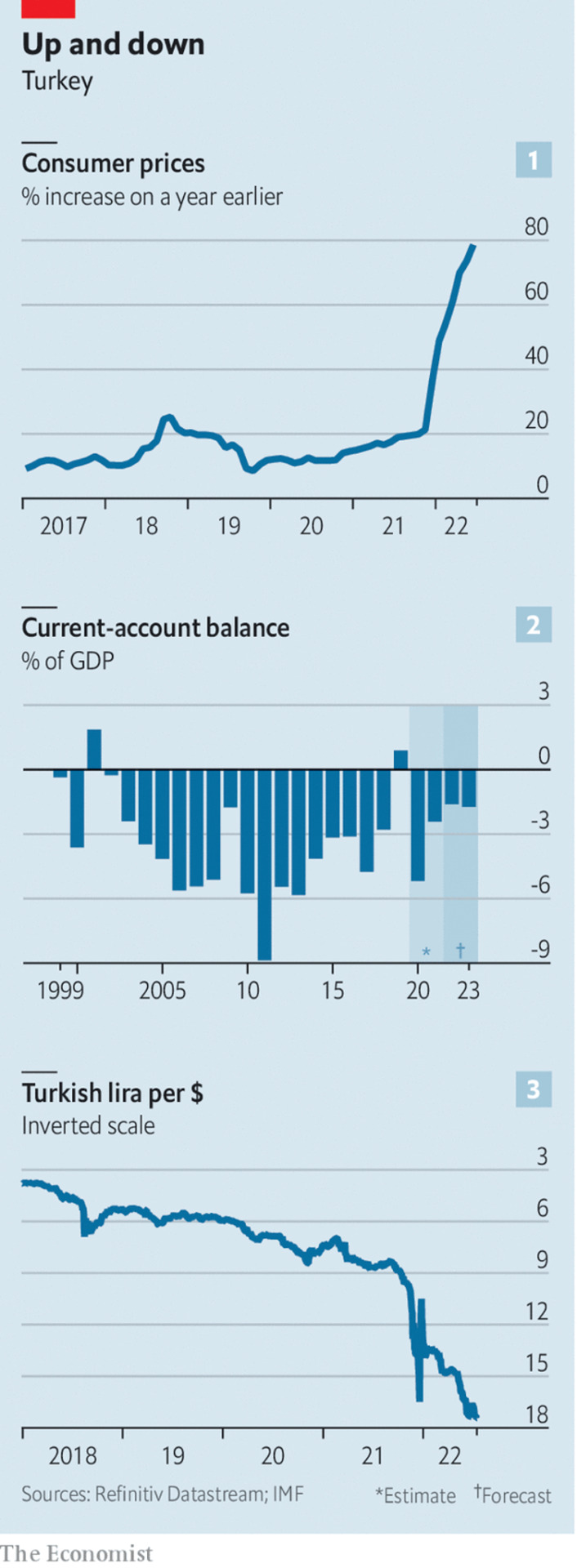
The resilience of Turkey’s real economy is something of a puzzle. It was one of the few big economies that managed to grow at all in 2020. Last year gdp rose by a handsome 11%. Recent figures show that industrial production rose by 9.1% in the year to May. Even seasoned businessmen have been taken by surprise.
At the centre of the mystery is a tug-of-war between two forces. On one side is a business dynamism that drives Turkey’s economy forward. On the other is the erratic policymaking that has undermined it. Under pressure from President Recep Tayyip Erdogan, the central bank has kept interest rates unduly low in the face of leaping inflation. That is especially unwise as Turkey is a low-saving country that needs to attract foreign capital to cover a persistent deficit on its current account, a broad measure of the balance of trade (see chart 2). It is an importer of energy, with much of its gas supplied by Russia and Iran. When energy prices rise, its trade deficit—and its need for foreign capital—tends to increase.
Until now, dynamism has trumped fragility and bad policy. But beneath the surface, there are signs that Turkey’s monetary instability is catching up with it. The authorities have resorted to desperate measures to husband the country’s diminishing stock of foreign exchange and to prop up the lira. But credit is drying up and investments are being put on hold. Runaway inflation has left many people struggling to make ends meet. Mr Erdogan faces presidential and parliamentary elections in June 2023 at the latest and he trails in the polls. He has dominated Turkey’s politics for two decades and seems unlikely to go quietly. Economically and politically, the coming months are likely to be volatile.
Bazaar To Bizarre
For a while, Turkey had the macro-economic stability that now eludes it. Reforms after a crisis in 2001 were transformative. One big change was the granting of greater independence to the central bank in pursuit of low inflation. New laws put constraints on public spending and opened up government procurement to competitive bidding. When Mr Erdogan came to power in 2003, he stuck to the new policies. Inflation dropped to single digits. gdp growth took off. Productivity picked up.
But over time the impetus for economic reform faded. The central bank succumbed to political pressure and lost sight of its inflation goal. Mr Erdogan’s love for grand infrastructure projects was given free rein. The procurement law was gutted. Building contracts were handed out to cronies. A building boom displaced export-led manufacturing as the economy’s engine. Construction is a low-productivity industry, so the quality of gdp growth dropped. It is also notoriously sensitive to interest rates—perhaps one reason for Mr Erdogan’s insistence on keeping them low.
Even so, a decade of easy money and surplus global savings after 2008 kept Turkey’s international credit line open. But there were balance-of-payment scares, such as during the “taper tantrum” of 2013, when the prospect of tighter monetary policy in America sparked an emerging-market mini-crisis. By the summer of 2018, Mr Erdogan’s belligerent insistence that high interest rates were a cause of high inflation, and not a cure for it, sparked a flight of foreign capital. The lira began a steep collapse in value (see chart 3). The last vestiges of central-bank independence were destroyed. Three governors were sacked by Mr Erdogan in as many years.
In the closing months of 2021, interest rates were cut by five percentage points, to 14%. The lira came under renewed pressure. Inflation has since surged from about 20% to almost 80%. But Mr Erdogan is unmoved. Those who insist on a link between interest rates and inflation “are either illiterates or traitors”, he said recently.
Amid such chaos, it is remarkable that the economy has kept going as well as it has. Much of that is the result of Turkey’s many commercial strengths. It has a large domestic market of 85m mostly young consumers, and has long been a staging post for trade between east and west. The country’s business culture has deep roots. The proportion of the population that aspires to be entrepreneurs is high by international standards.
There are, broadly speaking, three kinds of Turkish business. The first is large firms, often conglomerates. These account for a quarter of employment and half of the business sector’s value-added. Some are joint ventures with European firms. The best manufacture high-quality capital goods, car parts and military hardware for export. They approach German levels of productivity. At the other end of the scale are small, unregistered firms, with low productivity. In between is a third group of medium-sized family firms, with some workers on the books and others not.
This structure helps explain the agility of Turkish business. Many large firms are conservatively run and diversified across industries and export markets, which gives them a built-in resilience. The largest conglomerate, Koc Holding, has four main divisions: vehicles and parts (in joint ventures with Ford and Fiat), white goods, oil refining and banking. Sabanci Holding, another conglomerate, has retail, energy, cement-making, banking and manufacturing businesses.
The best mid-sized family firms share with them a nimbleness that comes from years of living with economic volatility. Turkey has a history of high inflation. Bosses have become experts at juggling finances. Companies have had time to adjust to a weak lira since 2018. Many have reduced their dollar debts.
Smaller firms adjust by other means. The line between company and household is blurred. Risks are pooled among family members. Very often the response to adversity is to work harder. Four-fifths of the workforce put in more than 40 hours a week in their main job, one of the highest shares in the oecd—though long hours compensate for low labour productivity. Another strategy for small and mid-sized firms is to push business into the grey economy, where wages often do not keep up with inflation or minimum-wage laws.
Istanbulls
Hard work and agility help businesses to keep going. But they also need demand. One of the big surprises in Turkey has been the strength of consumer spending. Inflation in the high single-digits has weighed on consumers in Europe and America. Yet, in Turkey, far higher inflation has not sapped demand. There are plenty of theories as to why. One is that consumers saw the fall of the lira, knew what that meant for future inflation, and splurged in anticipation of higher prices. Durable goods in particular are a hedge against inflation. New cars, white goods or imported luxuries hold their worth better than lira, even if they are not as liquid a store of value as, say, gold coins or dollar bills. With interest rates so low in real terms it is almost negligent not to borrow to spend.
But credit is not the only fuel. Turkey’s young population has a high propensity to consume out of wealth gains, says one Istanbul-based economist. And well-off householders have much of their wealth tied up in foreign-currency deposits and property, which have held or increased their value.

For companies that sell mainly in Turkey and for whom imported raw materials are a big part of total costs, the lira’s collapse is a headache. But it has been a big stimulus to exporters whose costs are mostly in lira and whose revenues are in hard currency. The real exchange rate (that is, adjusted for relative inflation in Turkey and its export markets) is what matters for export competitiveness. Turkey’s has fallen a long way (see chart 4).
There are other factors that also favour Turkish exports. The cost of shipping from Turkey to Europe is far lower than from China. Goods can be shipped from Gaziantep via local ports in less than 72 hours, says Mr Mahsereci, compared with a minimum of a month from China. And supply is more reliable. Turkey can also export via the Aegean or the Black Sea.
Yet accelerating inflation poses big challenges for even the most agile business. One is pricing strategy. It is tricky to judge where to pitch prices. Too high, and you risk losing market share to rivals; too low, and you may find you do not cover replacement cost. Hard decisions seem to multiply. “You have to be ready to negotiate with all of your customers and all of your suppliers all of the time,” says a businessman. “It is very, very tiring.” Some prices are slow to adjust. A large share of mobile-phone subscribers have 12-month contracts. Many are still on last year’s prices.
Businesses must protect themselves from inflation to survive. This often means that the cost is pushed onto others. That creates tensions—between landlords and tenants, shops and customers, and firms and their suppliers. No business can afford to defer the settlement of its customers’ bills for very long. “Payment terms of three to six months are down to zero to three months,” says an Istanbul-based investor. And there are other pressure points. Turkey’s external deficit has not gone away. In principle, devaluation is a remedy. It works by stimulating exports and crushing demand for imports. The export fillip is working, but strong consumer demand has kept imports high.
Against The Flow
Turkey must either attract fresh foreign capital or draw on its existing reserves of foreign currency. Both are becoming harder. The quality of capital inflows to Turkey has steadily degraded over the past 20 years. Foreign direct investment (fdi), the “stickiest” form of capital inflow, has not matched the levels of the mid-2000s, when Turkey followed more orthodox policies (see chart 5).
Some European bosses now see Turkey as a potential alternative to China as they seek to shorten and diversify their supply chains. Last year ikea said it would move production of some of its furniture from Asia to Turkey. Hugo Boss, a clothing firm, said it would add capacity to its factory in Izmir to reduce reliance on Asia. But Turkey’s monetary instability—and a deterioration in governance and the rule of law—is a bar to another fdi boom. Portfolio flows into Turkish bonds and shares have evaporated. That leaves Turkey ever more reliant on short-term syndicated loans extended to local banks. As interest rates go up worldwide, these are harder to come by.
The situation for reserves is also perilous. Turkey’s central bank has burned through tens of billions of dollars trying to prop up the lira. Official reserves of foreign currency are negative if swaps with local banks are taken into account. (The central bank still has holdings of gold.) Meanwhile private-sector demand for dollars and euros has risen. At their peak last year, two-thirds of bank deposits were held in foreign currency. The growing illiquidity in currency markets means exporters have every incentive to hoard dollars and euros from their overseas sales.
The authorities are striving to curb this creeping dollarisation and to stop the lira from falling further. A scheme has been in place since December which indemnifies deposits switched out of dollars or euros and into lira from exchange-rate losses. In January Turkish exporters were ordered to hand over 25% of their hard-currency earnings to the central bank. That figure was raised to 40% in April. Complaints from corporate treasurers that they needed a float of dollars and euros to pay for vital imports or to service debts had no effect.
In a sign of growing desperation, the authorities went further. On June 24th Turkey’s bank regulator said it would ban loans to firms that cling to significant hard-currency holdings. This measure was to stop companies borrowing lira on the cheap to speculate in dollars. The initial reaction in Istanbul was shock. Suddenly the main concern of corporate Turkey was not inflation but a potential credit crunch.

Not (Yet) Melting Down
If the regulation is strictly enforced, says one executive, banks will be unwilling to lend and firms will be forced to cut back on non-essential spending. Some may struggle even to get enough trade credit to finance their working capital. It may not come to that. Noises from Ankara are that the banks will not bear the burden of verifying whether borrowers are complying with the new regulation.
Still, companies are turning cautious and big investments are being put on hold. “Everybody is waiting for the elections,” says an investment banker. Mr Erdogan’s ak Party is clearly behind an alliance of six opposition parties in opinion polls. He trails in polls against the plausible opposition candidates for the presidency. His defeat would probably mean a return to monetary orthodoxy.
Taming inflation would be a big and painful job, but Turkey’s experience after 2001 shows that, with the right policies, it can be done. fdi could rebound to take advantage of Turkey’s position as a low-cost manufacturing hub on Europe’s doorstep. A rally in the stockmarket is plausible, given how cheap Turkish shares have become. Yet electoral defeat for Mr Erdogan is far from certain. He has jailed political opponents, bullied the media, sought to suppress free speech and could resort to all manner of chicanery to cling to office. Many of the people interviewed for this article did not want to be named.
And before then, the exchange-rate crisis might enter a new, more combustible phase. Once the summer is gone, and the boost to hard-currency earnings from tourism starts to fade, things could get dicey. A tranche of protected lira deposits matures at the end of August. The state has $6bn of external debt payments due in the second half of this year, according to Morgan Stanley, a bank; big companies and banks have $23bn coming due. It seems unlikely that all these debts will be fully rolled over. Yet somehow the diminishing stock of foreign exchange must be augmented—or husbanded. In a worst-case scenario, limits might be placed on withdrawals of householders’ dollar deposits.
Perhaps the economy will somehow muddle through until the elections. As strange as Mr Erdogan’s approach to monetary policy has been, his fiscal policy has been quite conservative. The public debt-to-gdp ratio was 41.6% of gdp last year. This is comfortably below the debt burden of Turkey’s emerging-market peers. Given the country’s low solvency risk, perhaps its friends in the Gulf might stump up some of their petrodollars.
Turkey has withstood some remarkable strains. Now, more than ever, Turkish businesses are focused on survival. Inflation breeds uncertainty and uncertainty breeds caution. The things you must do, you keep doing, says a businessman. The rest can wait. “You live another day.” ■
— This article appeared in the Briefing section of the print edition under the headline "Inflation Nation"
0 notes
Text
Shortages. Once something we mocked the feeble Soviets for, now an everyday occurrence in bouncing-off-the-limiters capitalism. Everyone around you has at least one consumer product that they can no longer get ahold of because either nobody is making the damn things anymore, they are trapped in a cargo ship that can’t dock, or they are stuck on the shores in China waiting for an empty cargo ship to whisk them away to the Land of the Modestly-Affordable-With-Credit.
Now, I’m a reasonable man. I know folks have limits, and everyone needs a little break, especially now. When it’s stuff like high-zoot computer chips, I know that shit is hard to make, and smart people are probably working as hard as they possibly can on making sure that they can convert some loose sand into deepfaked pornography generators as quickly as possible. When it’s a fucking power connector, though? Something’s gotta change.
In case you’re unfamiliar, basically every electrical connector is some small pieces of metal stuck into a piece of plastic. That’s right, even your fancy turbofuture electric car’s charge system is nothing more than some thick-ass conductors that a plastic mould loosely arranged into some melted-ass dinosaurs. They’re not hard to make, which is why there are one hundred billion different kinds of electrical connector out there. There’s like seventeen versions of USB alone. And it’s not like the factories need a big, long build time to punch out some connectors, either: the whole thing is basically a particularly bright junior high student’s science fair project banged out in the weekend before the big deadline. I shouldn’t have to wait until March for the entire sum of human industry on this planet to bend six pieces of copper and then stick them in injection-moulded plastic using a mould you already made!
A much less patient person would buy a plane ticket over to Shenzhen, or Poland, or North Dakota. Wherever those damn things are made. And then they’d drive over there in a rental car, maybe taking in the sights along the interstate highway that leads to the industrial park in which the factory machinery lives. And then they’d walk right in there and just punch out a couple of these cute little guys themselves. Well, I can’t do that either, because there aren’t any rental cars! Turns out those things run on high-zoot computer chips that are hard to make, and the folks who make the high-zoot computer chips are busy waiting on their fucking power connectors.
71 notes
·
View notes
Text
The American Dream-For Dummies, pt.2

Media bias in the United States occurs when media outlets perpetuate a particular narrative that often highlights the agenda of their favored political party. Media bias presents skewed information and threatens the standards of professional journalism. Many suggest that both liberal bias and conservative bias occurs within various outlets. These accusations seem to increase as the two-party-system becomes more polarized. There is also bias in reporting from an angle that favors the corporate owners of various media sources, and mainstream bias. Bias occurs when media outlets choose to focus on perpetuating a specific narrative by focusing on “hot” stories, rather than reporting news of more substance.
In May 2020 President Donald Trump tweeted, “Republicans feel that Social Media Platforms totally silence conservatives voices. We will strongly regulate, or close them down, before we can ever allow this to happen. We saw what they attempted to do, and failed, in 2016. We can’t let a more sophisticated version of that happen again.” Sophisticated certainly being the right word here. Major media platforms like Facebook, Twitter, YouTube and Instagram have the technology and recourses to selectively decide upon which information will reach the American people and which will not. When media chooses to supress the ideas of those who oppose their chosen narrative, they silence American voices and take a major hand in moulding the cultural norm and the narrative that will be most likely adopted.
Media is the most powerful tool human beings have to spread ideas. Looking at how Thomas Paine’s Common-Sense publications were able to inspire the revolt against Great Britain, resulting in the American Revolution, one could not reasonably argue against the fact that media is the unchallenged leading source for inspiring action. Those who control the media, control what is believed by the majority to be true and therefore inspire action based upon those beliefs. So, when the media tells us that our country is inherently racists, that it is and has always been led by white supremacists, and that these faults are so deeply engrained in our very existence, then our only option to correct these wrongs must be done by “dismantling” the entire United States “economic and political system.”, as suggested by Ilhan Omar, U.S. Representative for Minnesota's 5th congressional district.
According to CNN, GOP lawmakers reported that China has given money to hundreds of U.S. Universities and the officials are concerned that Beijing may use its donations as leverage to influence academic research in the U.S. The Washington Examiner tells us that the ranking members of seven House committees co-signed a letter to Education Secretary Betsy DeVos asking for information on the department’s effort to tighten transparency rules for universities receiving foreign funding. The letter states, “For some time, we have been concerned about the potential for Chinese government to use its strategic investments to turn American college campuses into indoctrination platforms for American students”. Time will tell of course whether or not there is validity in these concerns, but the "Annual Report on U.S. Attitudes Toward Socialism,” shows that 58 percent of the up-and-coming generation opted for one of the three systems, compared to 42 percent who said they were in favour of capitalism. The most popular socioeconomic order was socialism, with 44 percent support. Communism and fascism received 7 percent support each (Richardson, The Washington Times).
.
Marion Smith, executive director of the Victims of Communism Memorial Foundation stated, “This troubling turn highlights widespread historical illiteracy in American society regarding socialism and the systemic failure of our education system to teach students about the genocide, destruction, and misery caused by communism since the Bolshevik Revolution one hundred years ago”. Again, we see an agenda being pursued that would profit from the general consensus being that our Founding Fathers should be condemned and for their history to be altogether forgotten (hence, the removal of their statues and monuments). In succeeding in this we must turn away the American ideals set in place by these men, which most certainly includes our founding documents, the U.S. Constitution, The Declaration of Independence and the Bill of Rights.
Most Americans fail to recognize that without our Founding Fathers there would be no United States of America. These brave men led the revolution against King George III and detailed their grievances in the Declaration of Independence. “The history of the present King of Great Britain is a history of repeated injuries and usurpations, all having in direct object the establishment of an absolute tyranny over these states. To prove this, let facts be submitted to a candid world.” The document goes on to describe the ways in which we would no longer suffer under a tyrannical government. This document was the first motion set in place in which would publicly reject the unjust powers of monarchy as a means by which the colonies would be governed. It took more than bravery to be so bold as to rebel in plain sight, in a formal document against the absolute strongest force our World had ever known and only these men can be credited with that bravery.
It was the first official document which stated, “all men are created equal, that they are endowed by their Creator with certain unalienable rights”. It is true that these statements were not applied to “all” for many years to come, but the fact remains that without this bold idea that suggests all human beings are of value in the eyes of their Creator and therefore deserving of rights which allow us to peruse Life, Liberty and Happiness then we would not be where we are today. This notion that identified The People as individuals who were worthy of goodness, simply because they were born has inspired action since 1776 to untangle the corrupt moral structures by which had previously been recognized as the social norm. Who today can say with full certainty that they would have had the gull to declare so boldly that despite the fact that tyranny and suffering under its absolute power was all we had ever known, that they would have had the courage to not only declare independence, but to declare that each individual created by God had the right to do so?
This set in motion a fight for American independence and freedom which would last nearly eight years, killing over 200,000 men who died for the very freedoms so many today take for granted. Again, let us recognize the courage it took for these every day, hardworking men who knew next to nothing about fighting in a full on war to grab their guns, leave the comfort of their homes and families and to stand face to face with experienced soldiers sent by a very pompous king who wanted nothing more than end their lives. Winning the Revolutionary War was an absolute miracle. In no way were we prepared to go up against the World’s strongest army of that time. Absolutely every odd was stacked against us, but because these brave men were fighting for something that they believed to be true with every ounce of their being; because they were fighting for Liberty, not just for themselves but for those to come they did the unimaginable and we should regularly look around ourselves at all the luxuries we have today and give thanks to them.
#communism#communism kills#america#usa#journalism#socialism sucks#media bias#fox news#declaration of independence#red white and blue#politics#founding fathers#donald trump#president#cnn fake news#american dream
7 notes
·
View notes
Text
There are nearly 500 hardware and mould manufacturing enterprises
There are nearly 500 hardware and mould manufacturing enterprises of which 392 are scaled ones, over 100,000 practitioners, and 4 professional markets of machines, hardware and moulds. The population of Chang'an was 594,809 at the 2000 Census, making it the most populous town in China Changan has won itself the reputation of China Famous Town of Machines, Hardware and Moulds and was determined as one of the second batch industrial cluster upgrade pilots.The hardware and mould industry is mainly concentrated in Changan Town.Dongguan is a prefecture-level city in central Guangdong province, People's Republic of China an important industrial city located in the Pearl River Delta. Metal mold industry can be found in Changan, Humen, Changping, Hengli, Fenggang, Tangsha, Shijie, Guancheng; which Changan and Hengli are the leading producers. After five years fostering, the China (Changan) International Mechanism, Hardware & Mould Fair has become a professional fair with large scale and great influence on the equipment manufacturing industry in China. Dongguan borders the provincial capital of Guangzhou to the north, Huizhou to the northeast, Shenzhen to the south, and the Pearl River to bucket manufacture the westDongguan is one of the four largest mold bases in Guangdong and mainly produces plastic molds, supplemented by stamping dies.We are a professional China purchasing agent who has established good relationship with a number of mould manufacturers and suppliers in Dongguan and we can help you to purchase tooling from Changan in most efficient wayThe main scope of tooling that we help you to buy include: Plastic Injection Mould ,Stamping die, Die casting, Preform Mould ,Blowing Mould,Silicone mould, Punching Mold ,Extrusion Mould . Chang'an Town is an industrial town within the Dongguan prefecture-level city in the Pearl River Delta, in the Guangdong Province of southern China. The majority service platforms include the National Key Moulding Technology Laboratories Dongguan Experimental Center of Central China University of Science and Technology and the Mould Test Center. In 2006, with great support from the Ministry of Science and Technology of the PRC, it was upgraded to international professional fair status. In 2007 the total output value of the industry reached 9.76 billion yuan
1 note
·
View note
Text
What Are Ceramics?
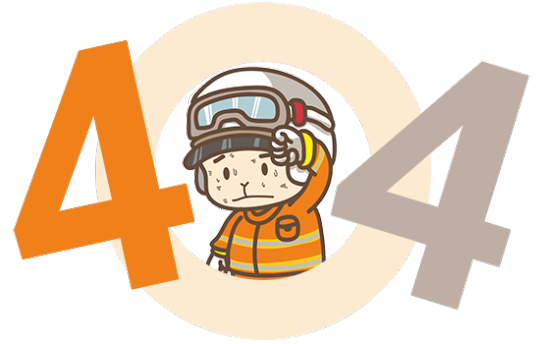
Ceramics are hard, brittle and durable materials that are used in a variety of applications. They are known for their high heat resistance, corrosion resistance, and good electrical insulating properties. They are used in many types of products including pots, dishware, cooktops, and cookware. The properties of ceramics are determined by their chemical composition and grain size.
Ceramics are inorganic, non-metallic, and highly resistant to plastic deformation. They are used in a number of industrial and medical applications. They are also known for their low ductility, making them ideal for insulating components. They are also used for self-lubricated bearings and artificial joints.
Traditionally, ceramics were made from natural substances like clay, quartz sand, and portland cement. In the Industrial Revolution, ceramics were developed and manufactured using advanced technologies. Today, they are widely used in the manufacturing of a variety of products including electronics, aerospace, medical equipment, and automotive.
Ceramics can be made into different forms and are usually made by moulding clay or water-based mixtures. The resulting product is fired in a kiln, which forms new chemical bonds. The final product may be a glazed or unglazed object. Some of the most common ceramics include porcelain, whitewares, and bricks.
سيراميك can be used in a number of different applications, such as body armor, spark plugs, and space shuttle tiles. In addition, they are used in fiber optics and as part of a nuclear fuel. They are also used in microchips and are used in medical devices such as orthopaedic implants.
The term ceramic comes from the Greek word for potter's clay. Early people started using ceramics nine thousand years ago. The first recorded use of ceramics occurred in southern central Europe. It was then used to make sculptures. The early smiths began to capitalize on the refractory nature of quartz sand. They formed moulds from this material to cast metals.
A key ingredient of most ceramics is feldspar. It can be added in various forms, such as sandstone or flint pebbles. Its composition varies from CaAl2Si2O8 to NaAlSi3O8. The addition of feldspar reduces the melting temperature of aluminosilicate phases. The feldspar also acts as a fluxing agent.
Another major ingredient of ceramics is silica. This is added as a filler to give the resulting ceramic its strength. However, silicas must meet a certain chemical purity.
Other common raw materials that are used to create ceramics are clay, kaolin, aluminum oxide, and silicon carbide. The raw materials for ceramics vary depending on the type of product to be manufactured. For example, a porcelain ware will be made from china clay, while a whiteware will be made from kaolin clay. A crystalline ceramic can be manufactured by slip casting, injection molding, or dry pressing.
The mechanical strength of a ceramic is determined by the Hall-Petch equation. The mechanical strength of a ceramic is largely influenced by the density of the crystalline grains. The strength of a crystalline solid is also dependent on the type of porosity in the material.
1 note
·
View note
Text
Deptford Day Out: Gossamer Fog and Seal Gallery
Last month, I spent a wonderful afternoon exploring Deptford, in South East London. On the high street is an inconspicuous door that leads to a small basement gallery called Gossamer Fog. This duo show called Zeitgeber is “external phenomena that inhabits and activates the synchronized cycles of the Earth, enabling our circadian rhythms to align with the cycles of the solar system”. I never heard of this term and originally thought it was fabricated, but upon looking it up it is in fact a German word that literally means “time-giver” or “synchroniser”!

In the main room were several sculptures by Andrew Sunderland. It was my first time seeing work created with thermoplastics, which melt in water and can be moulded and re-moulded, solidifying once cooled. From the gallerist that was present, she told me that he used recycled plastics and they can be melted again and again. Fascinating material!

Stretched along what seems like a black silhouette (corpse) of a body, Sleepers 11 looks like the remnants of a nuclear future, sickly pale yellows, oranges and pinks oozing out from the body. The sculptures were so tactile and enticing, looking both repulsive and delicious.
Bits of moss grow from the shoulder, chest and head, signifying that this toxic man-made excess goo has been here for lifetimes, inviting life-forms to inhabit and colonise it.
Scattered on the left are plastic nasal drops, making me think more of these bodily fluids oozing out of the body. As this exhibition seems to be about critiquing late capitalism’s domination over all aspects of our lives, disrupting our few hours of sleep and rest, I first thought they were eye drops.
Part of of the title of this piece was “(its body formed an upright building, growing towards the sun)” and I loved that as this being seems to inhabit multiple timescales, abandoned and reclaimed by nature, as well as still in flux, the textures of the thermoplastics never quite at rest.
There was a two-channel video piece, OK SWALLOW GREAT, by Solveig Settemsdal. I took no photos but it was a wonderful meditative piece, overlaying images of water, still canals with big cement walls going through eutrophication, the process of when there are too many nutrients in the water (pollution like nitrogen and phosphorous) that depletes the oxygen in the water, thus killing off wildlife.
When I was in high school studying environmental systems, eutrophication was a favourite topic for me and I ended up doing a major project for my final year, testing the oxygen levels in different water areas around my apartment neighbourhood in China.
Settemsdal also had a fascinating installation in the main room, which looked uninteresting at first but upon further investigation, the elaborate contraption moved strange fluids with magnet pumps and other things to create a downward stream of liquid down a full tank. I will take a look more at what materials she used, definitely thinking about the inversion of time and the strange physics and chemistry of these fluids. Perhaps they are in us?
In the same room as OK SWALLOW GREAT, Sunderland had another wall-mounted sculpture.
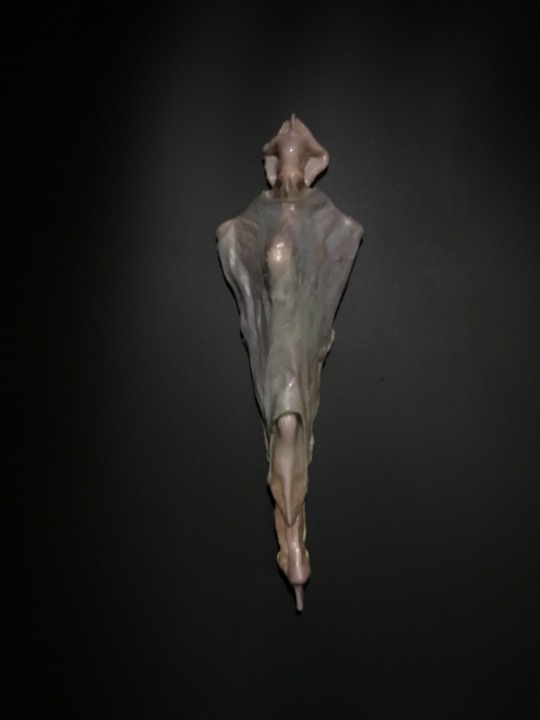
Titled BAD COPIES 3, this sculpture was beautiful and eery. I first thought, because of the slimy hood and bumps down the middle, it was like an alien vulva, but also maybe a mutated, dying stingray. This was not thermoplastic, but it felt so dense and weighty it looked like ceramic. I like seeing these strange corporeal forms and trying to wrap my head around what it is, whether it’s a piece of a larger entity or an auto-poetic organism, one of the few species left in the depths of the ocean, once we destroyed the world and ourselves.
I visited another small gallery next to Deptford Bridge Station, that was having an opening for the founder of Gossamer Fog, Samuel Capps. Exudater was a solo show. I did not spend long here and took no photos unfortunately, but there were some awesome tree-like forms. He seems to work with a lot of muted, ashy greys and deep matte and sleek blacks, mixed with glowing purples.

There was VR environment to explore that I decided not to try as I find using the strange eye masks too uncomfortable to enjoy the experience.
I want to read more on these artists, especially to look deeper at Settemsdal’s video works.
1 note
·
View note